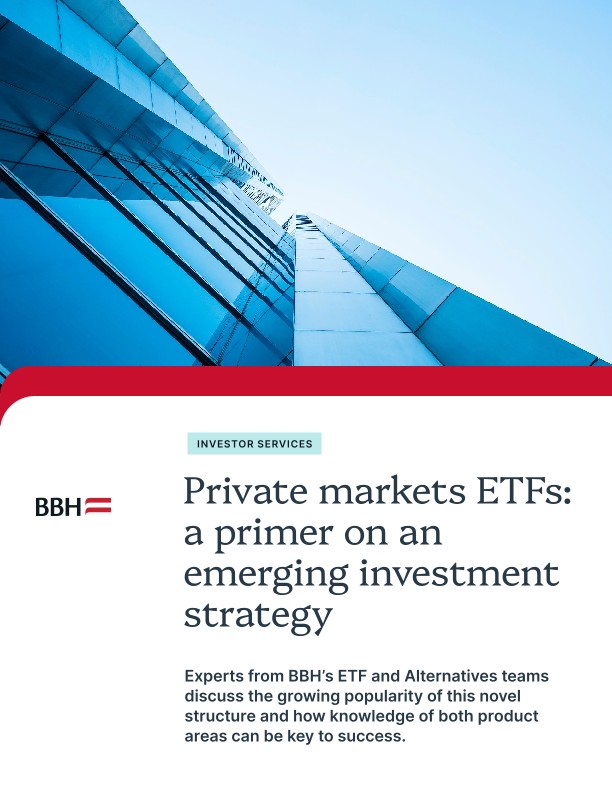Market context and growth drivers
The private market investment landscape is undergoing rapid expansion and, in this case, converging with another industry megatrend, ETFs.
- Private markets growth: Private assets now account for over $14.8 trillion in committed and deployed capital 2 and are forecasted to reach between $20 and $25 trillion by 20303. Additionally, there are now fewer publicly listed US companies (down about 50% since the 1980s), making private assets a key, often untapped opportunity for many investors who historically haven’t had access to these asset classes.4
- ETF boom: The US ETF market’s total net assets reached $11.8 trillion as of July 2025 and more than 460 new ETFs launched in just the first half of 2025, including the first public-private credit ETF from Apollo and SSGA.5
- Retail access: Historically, retail investors have had limited paths to invest in private assets. Most investment products have been geared toward institutional or qualified, high-net worth investors. ETFs that own private assets offer a means for ordinary investors to tap into private markets, often with minimums as low as a single ETF share.
Several current ETF products already highlight connections to alternative investments and private markets. Many of these products are innovative, successful, and do offer exposure, often indirectly, to private assets.
However, semantics matter, so let’s dig in further to clarify what we define as private markets ETFs in this guide:
Private markets ETFs need to directly own private assets such as private companies, private debt, or private real assets, for example. This includes ETFs that own private companies either directly (AGIX investment in xAI or Anthropic) or through a special purpose vehicle (SPV).
These are not necessarily private markets ETFs:
- Alternatives v. Private Markets: Alternatives is a broader term covering a variety of things but also includes hedge funds and hedge fund-like strategies. Typically, these investment strategies principally involve publicly traded securities within a private fund vehicle.
- ETFs that hold publicly listed investment managers, whose core business include investing in private markets (Blackstone, Brookfield, Apollo, KKR, etc.). For practical purposes, these ETFs invest in publicly listed securities, which indirectly have exposure to private markets through the ongoing business operations of the companies they own.
- ETFs that invest in listed vehicles like Business Development Companies (BDCs), which lend to or own stakes in private businesses.
Why does that matter? While we’re not endorsing the merits of any one particular investment strategy, we do find the details matter when it comes to understanding regulatory constraints, operational mechanics, NAV calculations, valuations, and any material conversation around potential returns, liquidity, and risk.






